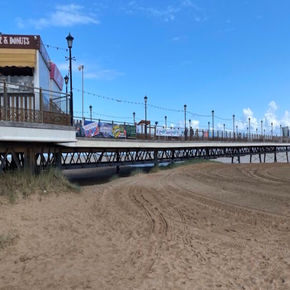ABOUT A GREATER
LINCOLNSHIRE
FOR ALL
AN
INTRODUCTION
Greater Lincolnshire is a county rich in heritage, natural beauty, and economic potential. From the historic city of Lincoln to the vibrant market towns and coastal communities that stretch from the Humber to the Wash, our area powers and feeds the nation. Yet our current system of local government – spread across ten different councils – is complex, costly, and inconsistent.
A Greater Lincolnshire for All sets out a new vision: a simpler, more effective, and more accountable model of governance for the whole of Greater Lincolnshire. By replacing the current system with two new unitary authorities – Northern Lincolnshire and Southern Lincolnshire – we can unlock better public services, more democratic representation, and stronger communities.
WHY
CHANGE?
Greater Lincolnshire is England’s second largest county by area, but one of the least densely populated. Services are difficult and expensive to deliver, transport connections poor, there are pockets of deprivation with low skills and missed opportunities for our young people. The existing patchwork of councils no longer meets the needs of residents or reflects local identity.
This existing complex system of local governance in Greater Lincolnshire creates duplication, inefficiency, and confusion. For residents, it means uncertainty about which council does what. For businesses and public service partners, it adds unnecessary barriers to collaboration and growth. And for central government, it dilutes Greater Lincolnshire’s voice.
This proposal responds to the Government’s call for a simpler, more sustainable model of local government. It builds on a shared long-term vision for Greater Lincolnshire – set out in the 2050 Vision – and the successful collaboration already being delivered through the South & East Lincolnshire Councils Partnership.
TWO UNITARY COUNCILS.
A Greater Lincolnshire for All would see two new unitary councils:
Northern Lincolnshire Unitary Council:
Covering North Lincolnshire, North East Lincolnshire, West Lindsey and the City of Lincoln.
Population: 526,000
Southern Lincolnshire Unitary Council:
Covering North Kesteven, South Kesteven, Boston, South Holland, and East Lindsey
Population: 569,000

Each council would take full responsibility for all local government services in their area – from roads and housing to education and waste – simplifying accountability and improving coordination.
Importantly, both councils would be of a similar population size and economic scale, ensuring fairness and balance across the region.





